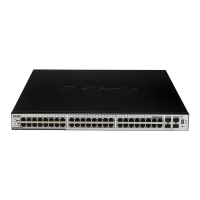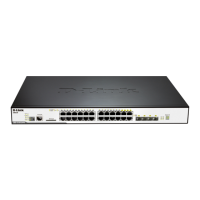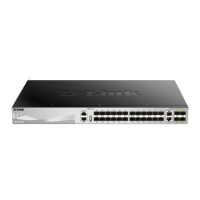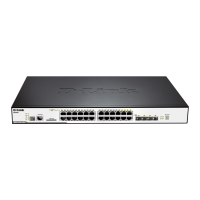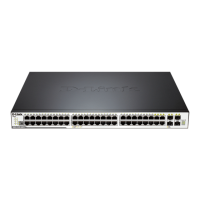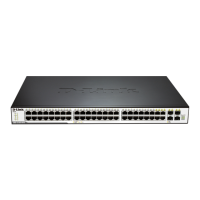DGS-3100 Series Gigabit Stackable Managed Switch User Manual
Defining Spanning Tree Global Parameters
While Classic STP prevents Layer 2 forwarding loops in a general network topology, convergence can take between 30-60
seconds. This time may delay detecting possible loops and propagating status topology changes. Rapid Spanning Tree
Protocol (RSTP) detects and uses network topologies that allow a faster STP convergence without creating forwarding loops.
When STP is enabled, Loopback Detection is also enabled. Loopback Detection identifies any Loopback BPDUs that the
Spanning Tree application receives on a port. In this case, the device sends a Loopback Detection trap for the port. When
the condition is resolved, the device sends a Loopback Detection Resolved trap and the port learns the STP configuration
again.
The
STP Bridge Global Settings Page contains parameters for enabling STP on the device.
1. Click L2 Features > Spanning Tree > STP Bridge Global Settings. The STP Bridge Global Settings Page opens:
Figure 3–14. STP Bridge Global Settings Page
The
STP Bridge Global Settings Page contains the following fields:
Field Description
STP Status
Enable or disables STP globally on the switch. The default is Disabled.
STP Version
Defines the desired version of STP to be implemented on the switch. There are three
choices:
STP — Sets the Spanning Tree Protocol (STP) globally on the switch.
RSTP — Sets the Rapid Spanning Tree Protocol (RSTP) globally on the switch.
MSTP — Sets the Multiple Spanning Tree Protocol (MSTP) globally on the switch.
Forwarding BPDU
Bridges use Bridge Protocol Data Units (BPDU) to provide spanning tree information.
STP BPDUs filtering is useful when a bridge interconnects two regions; each region
needing a separate spanning tree. BPDU filtering functions only when STP is disabled
either globally or on a single interface. The possible values are:
Enabled – Allows the forwarding of STP BPDU packets from other network
devices..
75
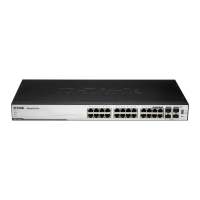
